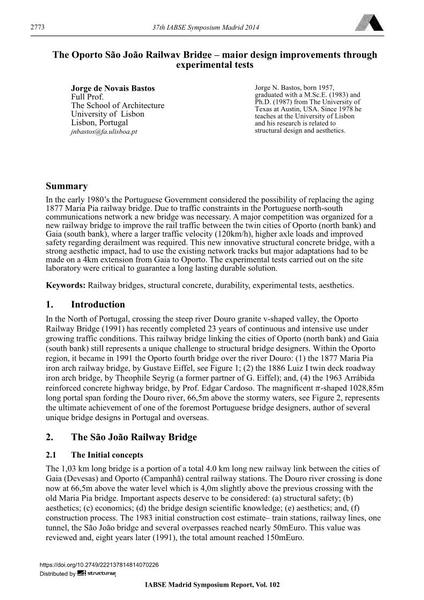The Oporto São João Railway Bridge – major design improvements through experimental tests

|
|
|||||||||||
Bibliografische Angaben
| Autor(en): |
Jorge de Novais Bastos
|
||||
|---|---|---|---|---|---|
| Medium: | Tagungsbeitrag | ||||
| Sprache(n): | Englisch | ||||
| Tagung: | IABSE Symposium: Engineering for Progress, Nature and People, Madrid, Spain, 3-5 September 2014 | ||||
| Veröffentlicht in: | IABSE Symposium Madrid 2014 | ||||
|
|||||
| Seite(n): | 2773-2780 | ||||
| Anzahl der Seiten (im PDF): | 8 | ||||
| Jahr: | 2014 | ||||
| DOI: | 10.2749/222137814814070226 | ||||
| Abstrakt: |
In the early 1980’s the Portuguese Government considered the possibility of replacing the aging 1877 Maria Pia railway bridge. Due to traffic constraints in the Portuguese north-south communications network a new bridge was necessary. A major competition was organized for a new railway bridge to improve the rail traffic between the twin cities of Oporto (north bank) and Gaia (south bank), where a larger traffic velocity (120km/h), higher axle loads and improved safety regarding derailment was required. This new innovative structural concrete bridge, with a strong aesthetic impact, had to use the existing network tracks but major adaptations had to be made on a 4km extension from Gaia to Oporto. The experimental tests carried out on the site laboratory were critical to guarantee a long lasting durable solution. |
||||
| Stichwörter: |
Ästehtik Dauerhaftigkeit Eisenbahnbrücken
|
||||
